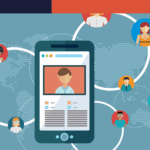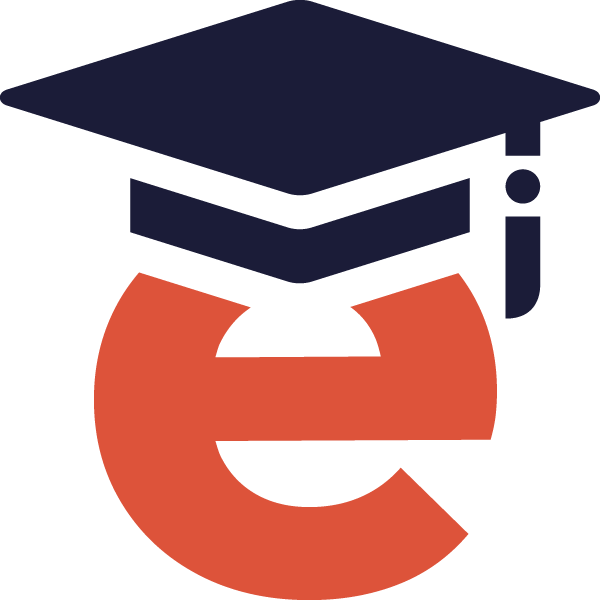Motivating and Retaining Young Employees Through Learning and Development
Written by Kristen Stevenson, PhD (ABD)
In the third quarter of 2023, Generation Z employees surpassed the number of baby boomers (DeMaria et al., 2024). Generation Z, born between 1997 and 2012, is aged 13 to 28 (Beresford Research, 2025). Some people in older generations (Boomers, Gen Z, and even some Millennials) cling to the stereotypes that Gen Z is lazy, selfish, and uncaring despite the evidence of higher IQs and greater self-control (Konrath, 2022). Gen Z is also industrious, increasingly selecting opportunities in skilled trades rather than taking on college loans (Johnston, 2024). This generation wants to learn, grow, and develop their skills meaningfully and on their own terms.
As you seek to motivate and retain younger employees in your organization, think about how their unique strengths can contribute positively to the overall team. Prioritize comprehensive learning and development programs that provide personalized, engaging, and relevant training opportunities. Ensure these programs include clear career pathways, mentorship options, and flexible learning formats. Such initiatives will help employees acquire new skills and promote their growth and sense of purpose within the organization.
Identifying Quiet Quitting
Younger employees want to live and work on their own terms, which often causes friction with their older co-workers. Much has been said about the quiet quitting trend (Morgan, 2023; Robinson, 2023; Carmichael, Jr., 2022; Harter, 2022; Rockwood, 2022). This can be seen as refusing to answer work communications after working hours, turning down projects they are not interested in, or being less invested in the role (Bello-Perez, 2022). Some refer to this behavior as “doing the bare minimum” while still fulfilling the requirements of their job description (Robinson, 2023). Prompted in large part by the pandemic, Gallop found that at least 50% of the U.S. workforce were quiet quitters, as employees pushed for greater clarity of expectations, opportunities to learn and grow, feel cared about, and to foster a connection to their organization’s mission or purpose (Harter, 2022). Gen Z may not have started the push for a better work-life balance, but they have fully embraced it.
Why Younger Employees Value Learning and Development
Gen Z has also shaken up the world of learning and development. The research shows that Gen Z employees must feel personally connected, engaged, and invested. This is the generation who grew up with technology and can google a tutorial video on YouTube in the blink of an eye. Let us look at ways to engage the youngest employees in your organization.
Younger employees prioritize learning and development more than ever. There are several reasons why Gen Z views continuous education as essential in their professional lives.
- Personal and Professional Development: Younger employees often place a strong emphasis on personal and professional development. They actively seek opportunities to acquire new skills and stay updated with industry trends. By participating in training programs, workshops, and online courses, they can enhance their expertise and broaden their knowledge base, contributing to their careers and overall sense of fulfillment.
- Career Advancement: For many young professionals, learning is a crucial pathway to career progression. They understand that acquiring new skills and passing relevant certifications can open doors to promotions and leadership roles within their organizations. This desire for growth motivates them to take advantage of development opportunities, signaling to employers that they are serious about their career trajectories.
- Meaningful Work: Gen Z employees are more engaged and feel valued when they can learn and contribute meaningfully to their organizations. Opportunities for professional development allow them to see the impact of their work, fostering a sense of purpose. Companies investing in their employees’ learning are likelier to cultivate a committed and enthusiastic workforce.
- Adaptability to Change: Continuous learning equips younger employees with the tools they need to navigate technological changes, market trends, and job roles. By engaging in ongoing education, they can maintain their relevance and competitiveness in their fields, which is crucial in a job landscape that is constantly shifting.
How do we do this?
Tailor the Learning Experiences
Design your training to cater to your employees’ specific needs and interests, incorporating best practices such as interactive videos, gamification, and micro-learning modules. A targeted and practical five-minute lesson is more beneficial than 45 minutes that are drawn out. Empowering employees to choose their learning paths with courses and certifications encourages buy-in while accommodating diverse learning preferences and schedules. (Moot, 2023; Carmichael, 2022; Bodin, n. d.). 69% of Gen Z employees say they want to learn more about topics they are interested in (Moot, 2023).

What does this look like?
- Interactive Videos: A sales department could use interactive videos that allow employees to choose different paths during a mock sales pitch. For instance, they can decide how to respond to customer objections, seeing different outcomes based on their choices. This real-time feedback helps them learn practical techniques.
- Gamification: A retail company might implement a points system where employees earn badges for completing training modules. For example, after finishing a course on product knowledge, they could participate in a quiz game where top performers get recognized monthly, keeping motivation high.
- Microlearning Modules: A tech firm could create a library of brief five-minute lessons on assorted topics like software tools, coding languages, or project management skills. Employees can access these bite-sized lessons during breaks or downtime, making learning convenient and less overwhelming.
Focus on Career Development
Clearly articulate career progression paths within your organization by outlining potential advancement opportunities and skills required for promotion. The keyword to focus on is upskilling. (Moot, 2023; van Loef & Phelan, 2023; Bodin, n. d.).
- Real-World Application: Employees begin as Customer Service Representatives, developing essential communication and problem-solving skills through conflict resolution and CRM training. They must acquire leadership and team management skills through workshops to advance to Team Leader. Operations Managers require strategic planning and project management abilities, which certifications and data analysis training can bolster. Finally, Directors of Operations engage in executive leadership programs and industry seminars to enhance their business strategy and collaboration skills. By defining these paths, we encourage continuous learning and upskilling, helping employees achieve their career goals while improving overall organizational performance.
Mentorship and Coaching
Nurture a sense of community and belonging by establishing a robust mentorship program where experienced employees guide and support younger colleagues to facilitate knowledge transfer and personal growth (van Loef & Phelan, 2023).
- Real-World Application: A seasoned project manager mentors a junior team member, sharing best practices and career advice. Regular check-ins and structured activities keep mentees engaged while mentors develop leadership skills. This initiative strengthens relationships and contributes to a positive workplace culture where everyone feels valued and connected.
Regular Feedback and Recognition
Provide constructive feedback and celebrate achievements to motivate continuous learning and engagement. Motivated learners are more likely to succeed (van Loef & Phelan, 2023).
- Real-World Application: A company created the “Path to Progress” program to encourage continuous learning and engagement. This initiative involves regular performance check-ins where managers provide constructive feedback, highlighting specific achievements and areas for improvement. For example, a manager may recognize a team member for successfully leading a project with an innovative approach. Additionally, accomplishments are publicly celebrated in a monthly newsletter that showcases individual and team contributions. The blend of constructive feedback and recognition fosters a motivating environment, inspiring employees to pursue their learning journeys actively.
Promote a Culture of Learning
Learning is not an isolated experience. As such, create a culture where employees constantly learn and upskill because it is an asset rather than a check-the-box requirement (Moot, 2023; Bodin, n. d.).
- Real-World Application: To foster a culture of continuous learning, an organization launched the “Learn Together” initiative, which encourages employees to participate in group workshops and lunch-and-learn sessions on topics like industry trends and personal development. For example, a marketing team member might lead a workshop on digital marketing strategies to promote active discussion. Employees are given an individual development budget to pursue courses, conferences, or certifications that interest them.
Important Considerations for Effective Learning and Development
When designing and implementing learning and development initiatives, there are several key considerations that organizations should keep in mind to ensure success and relevance.
- Align Learning with Business Goals: Learning and development programs should align with the organization’s strategic objectives. This ensures training initiatives support business priorities, helping employees see how their learning contributes to overall success.
- Measure Impact: Organizations must track the effectiveness of training programs by assessing outcomes like employee performance and engagement. Identifying areas for improvement allows for the refinement of learning offerings and demonstrates their value, justifying investment and fostering a culture of continuous improvement.
- Leadership Buy-In: Staunch support from leadership is crucial for prioritizing employee development. When leaders champion learning initiatives, it shows employees that their growth is valued, helps allocate resources, and fosters a supportive environment for continuous learning.
Final Thoughts
Generation Z is changing the workplace. Many prioritize skilled trades over college, seeking meaningful learning and growth opportunities with their organization. To motivate and retain younger employees, you should implement tailored learning programs, clear career paths, mentorship initiatives, and foster a culture of continuous learning. By aligning development with business goals and providing supportive environments, companies can leverage Gen Z’s strengths, enhance engagement, and improve overall performance.
References
Bello-Perez, Y. (2022, August 3). What is ‘quiet quitting’? LinkedIn.
Beresford Research. (2025). Age range by generation. Beresford Research.
Carmichael, Jr., P. (2022, September 27). How learning and development can help keep younger employees engaged. Training Magazine.
Harter, J. (2022, September 6). Is quiet quitting real? Gallop.
Johnston, W. (2024, April 22). Many in Gen Z ditch colleges for trade schools. Meet the ‘toolbelt generation.’ NPR.
Konrath, S. H. (2022, September 2). I study America’s youth. Here’s what I found. Big Think.
Moot, L. (2023, August 23). How to retain Gen Z employees? Provide them the learning experiences they want. LinkedIn.
Morgan, K. (2023, August 14). ‘Quiet quitting is the status quo:’ Workers are still proud to do the bare minimum. BBC.
Page, I., Reuss, K., & Zemper, Z. in K. DeMaria (Ed.) (2024, August). Changes in the U.S. Labor Supply. Trendlines, U.S. Department of Labor Employment and Training Administration.
Robinson, B. (2023, December 14). Forget ‘quiet quitting.’ In 2024 employees want employers to ‘quietly manage.’ Forbes.
Rockwood, K. (2022, January 14). How learning and development can attract and retain talent. SHRM.
Scheinman, T. (2020, January). The psychology behind generational conflict. Smithsonian Magazine.
van Loef, F., & Phelan, J. (2023, December 6). Nurturing growth: Strategies for enhancing workplace learning and retention. Chief Learning Officer.









